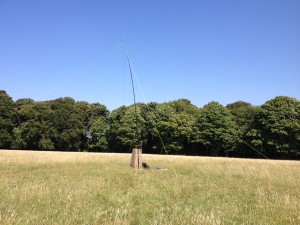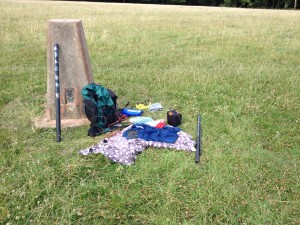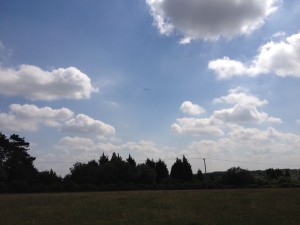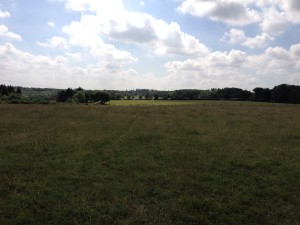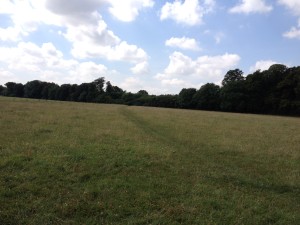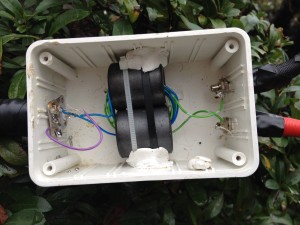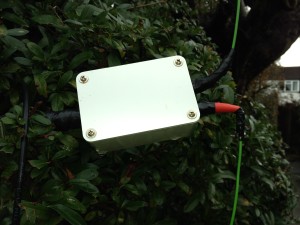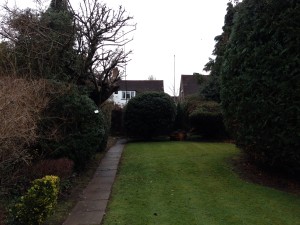With current HF conditions being very poor I was looking for something radio-related to give new challenges. A superb article by Tommy Read M1EYP in the August 2015 Practical Wireless on the Summits on the Air (sota) programme really grabbed my attention and excited me. I won’t explain SOTA in detail – look here http://www.summits.org.uk/tiki-index.php?page=SOTA+Chasing+for+Beginners or here http://www.sota.org.uk/AboutSOTA But HF amateur radio, open-air, mountains, pile-ups – what’s there not to like!
I purchased the very capable mobile Yaesu 857 rig, a Tracer Power http://www.tracerpower.com/tracer-lifepo4-battery-packs.html powerpack (which comes with a powerpole connector – very convenient), and some antennas and light-weight antenna supports from www.sotabeams.co.uk . My nearest sota summit is Wendover Woods G/CE-005 in the Chiltern Hills near Tring which is at a massive 267m ASL (lol) – http://www.sotawatch.org/summits.php?summit=G/CE-005
So last Saturday I drove to the woods and parked in a convenient lay-by near the mountain bike centre. It was a beautiful sunny day – lovely to be in the open air playing radio! A short walk to the trig point and I set up the antenna and rig – after some adventures trying to guy the sotapole I eventually just secured it to the trig point with bungee cords.
I started out on 40m with a bandhopper two dipole antenna and conditions were actually very good. I used the sota goat app on my iPhone to spot myself (self-spotting is acceptable and recommended for sota) and the hamlog app on the iPhone to log contacts as I had forgotten a pen or pencil!). I worked stations in England, Wales, Germany, Netherlands, Belgium and Scotland – see full log below. I then switched to 60m using a half-wave end-fed dipole and had another few contacts. 60m conditions were much noisier and difficult compared to 40m which was quiet with most calling stations being 59+. You need 4 contacts to officially activate a summit.
Here’s the log:
08/08/2015 0929 7.191MHz SSB DL0SY/P
08/08/2015 0939 7.191MHz SSB M3FEH
08/08/2015 0940 7.191MHz SSB G0FEX
08/08/2015 0942 7.191MHz SSB G8MIA
08/08/2015 0942 7.191MHz SSB GW4CQZ
08/08/2015 0943 7.191MHz SSB M0MDA
08/08/2015 0944 7.191MHz SSB DL2EF
08/08/2015 0945 7.191MHz SSB DK7ZH
08/08/2015 0946 7.191MHz SSB DK5WL
08/08/2015 0947 7.191MHz SSB MW0URC
08/08/2015 0948 7.191MHz SSB M0TVU
08/08/2015 0949 7.191MHz SSB ON7DQ
08/08/2015 0950 7.191MHz SSB PC2B
08/08/2015 0951 7.191MHz SSB G4AFI
08/08/2015 0956 7.191MHz SSB GM4COX/P
08/08/2015 0958 7.191MHz SSB PA7ZEE
08/08/2015 0959 7.191MHz SSB PA3CDN
08/08/2015 0959 7.191MHz SSB G0RQL
08/08/2015 1000 7.191MHz SSB M0SGO
08/08/2015 1001 7.191MHz SSB M3ZCB
08/08/2015 1002 7.191MHz SSB M1MAJ
08/08/2015 1047 5.3985MHz SSB GW4BVE
08/08/2015 1055 5.3985MHz SSB G0RQL
08/08/2015 1058 5.3985MHz SSB G8ADD
08/08/2015 1100 5.3985MHz SSB G4WSB
08/08/2015 1101 5.3985MHz SSB M0VCM
08/08/2015 1102 5.3985MHz SSB G0TDM
The scenery around the trig point is very beautiful – here’s a few more pics. Unlike the actual Wendover Woods centre, which was packed to bursting with picnicking families and activities, the trig point field was empty – a solitary walker and two mountain bikers were the only visitors in over two hours.

